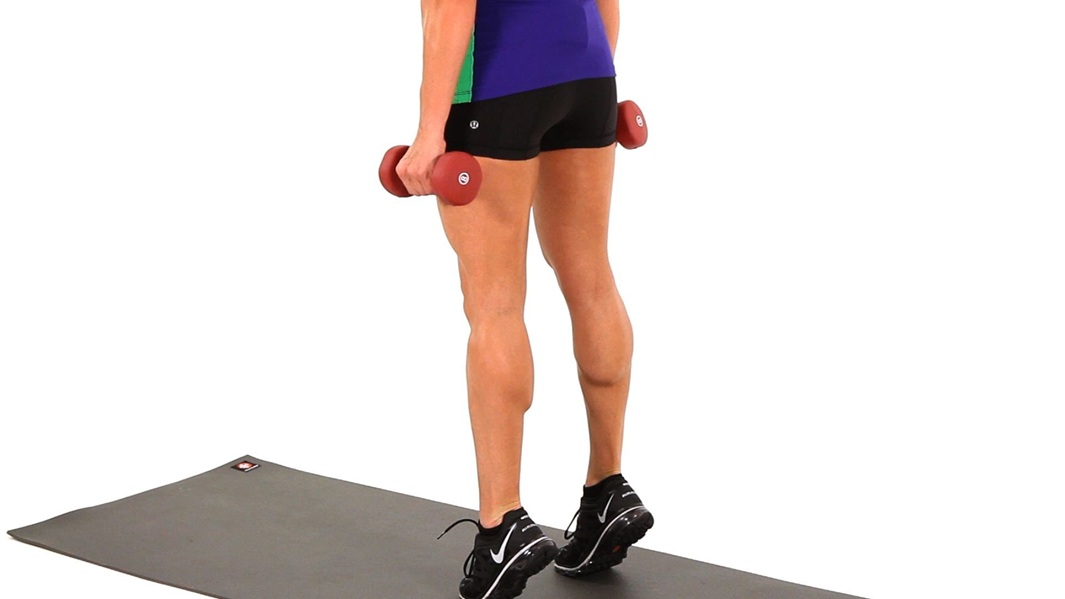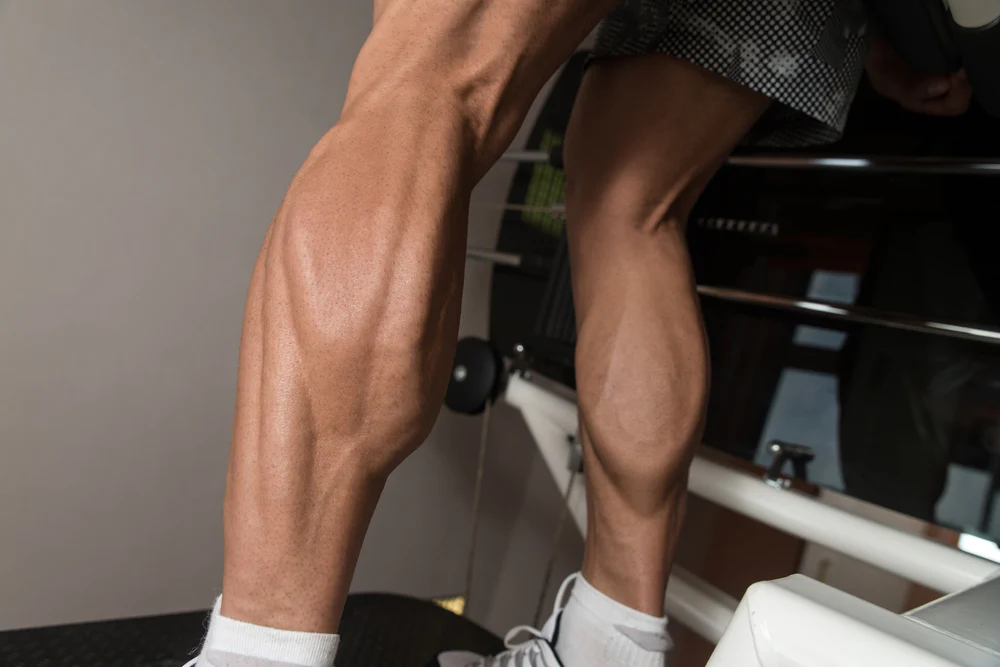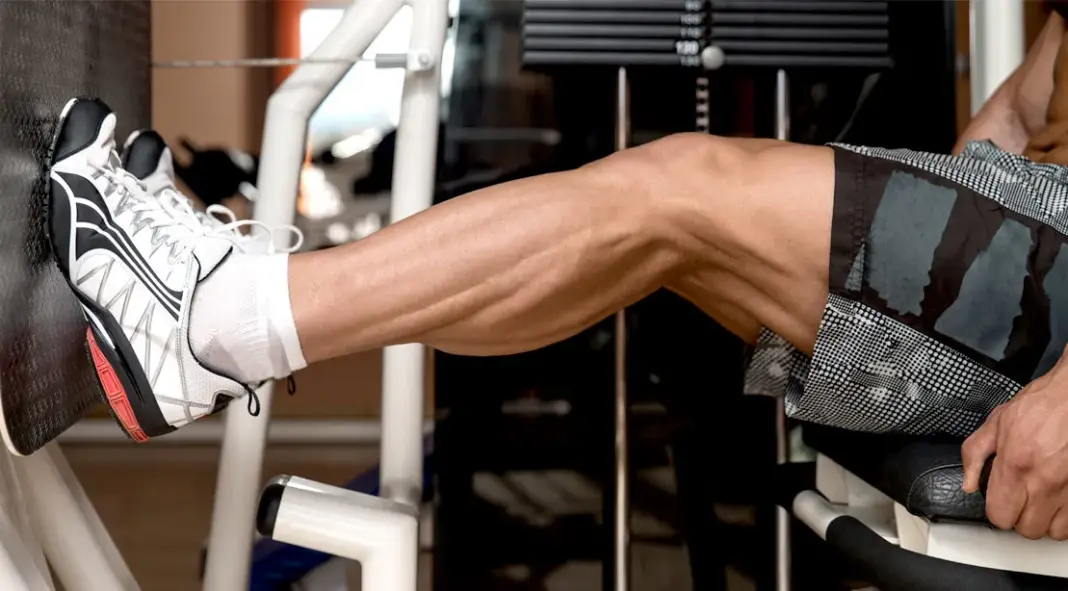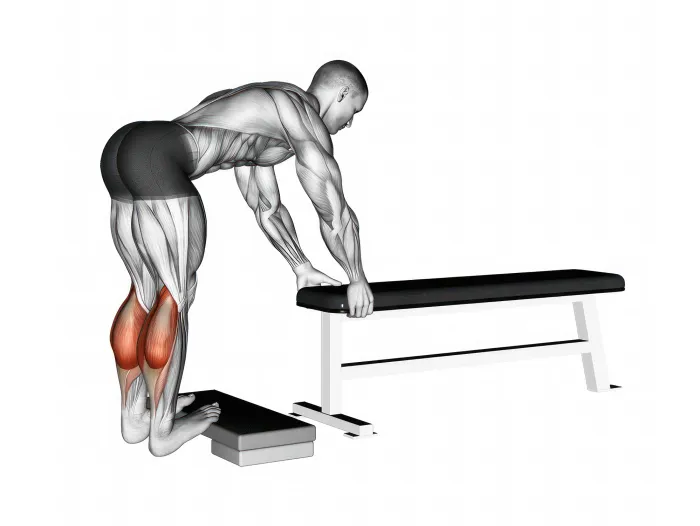The Ultimate At-Home Calf Workout: Build Bigger Calves with Bodyweight and Bands
You don’t need a leg press, a Smith machine, or a fancy standing calf raise setup to build serious lower leg size.
What you do need is structured programming, deliberate execution, and the right mix of bodyweight and banded calf training strategies — all of which can be done in your living room.
Calves can be one of the most stubborn muscle groups to grow. But that’s usually because they’re an afterthought — trained at the end of a workout with a few machine sets and little intent. At home, you’re forced to get creative, and that’s often when the most effective progress starts.
In this guide, you’ll get a full system to grow calves using just your bodyweight, resistance bands, and simple progression strategies.
Whether you’re a beginner, an intermediate lifter stuck training from home, or a seasoned bodybuilder looking to specialize without gym access, this blueprint will help you train calves with purpose — and finally spark growth.
Why Calves Respond Well to Home Workouts
Calves are a unique muscle group in that they’re highly fatigue-resistant, used to daily loading, and recover quickly. That makes them perfectly suited to frequent, high-rep bodyweight and banded work, even outside of the gym.
Here’s why home-based calf training can be highly effective — if you do it right:
✅ Calves Tolerate High Reps
They’re made of a high percentage of slow-twitch muscle fibers, especially the soleus, which means they can handle longer sets and recover faster than muscles like your chest or biceps.
✅ Daily Use = Faster Recovery
Your calves are engaged every time you walk, climb stairs, or stand. They’re accustomed to volume, which means they bounce back faster from frequent sessions — ideal for short daily workouts.
✅ Easy to Manipulate Range of Motion
With simple tools like stairs, books, blocks, or resistance bands, you can train your calves through a full stretch-to-contraction range, something many machine setups often lack.
Best Bodyweight Calf Exercises
Without external weight, your execution becomes your overload — and that’s where form, tempo, and volume play their part.
These bodyweight exercises target both the gastrocnemius and soleus, using strategic variables like time under tension, isometrics, and controlled reps.
Standing Calf Raise (Step or Stair)
- Why it works: Basic but powerful. Using a step lets you drop the heel fully and drive up into a peak contraction.
- Coaching cue: Use a 3-second eccentric, pause at the top, and don’t bounce. Push through the big toe.
Single-Leg Standing Calf Raise
- Why it works: Forces stabilization, doubles the load on one limb, and corrects imbalances.
- Coaching cue: Perform near a wall or doorway for balance, but avoid using your hands to help. Full stretch, full peak.
Wall Sit Calf Raise
- Why it works: Adds isometric quad tension while targeting calves through a dynamic raise. It’s brutal — and effective.
- Coaching cue: Hold a 90° wall sit and perform 20–30 calf raises. Squeeze hard at the top.
Slow Tempo Calf Raise (Flat Ground)
- Why it works: Time under tension becomes your overload. Great when no steps or tools are available.
- Prescription: 4 seconds up, 4 seconds down, 1-second pause at the peak = 1 rep.
Calf Hold (Isometric Peak)
- Why it works: Builds stability, endurance, and fiber recruitment at the top of the range.
- Coaching cue: Raise onto the balls of your feet and hold for 30–60 seconds.
Best Banded Calf Exercises
Resistance bands are a game-changer at home. They add progressive resistance, challenge stabilizers, and create great overload — especially when you slow things down and focus on the stretch and squeeze.
Banded Seated Calf Raise
- How to do it: Sit on a chair, anchor a mini band under the balls of your feet, loop the other end over your knees, and perform slow reps.
- Target: Soleus, which responds well to seated and higher-rep work.
Banded Standing Calf Raise
- How to do it: Stand on the band, loop it over your shoulders (like a yoke), and perform calf raises. The band will add load as you rise — great peak contraction.
Banded Donkey Calf Raise (DIY Style)
- How to do it: Lean over a bench, table, or countertop. Anchor a band under your feet and hold the top to get deep range and a powerful squeeze.
- Why it works: Similar to donkey calf machines in the gym — excellent stretch and tension combo.
Banded Isometric Hold
- How to do it: At the top of a banded raise, hold for 30–45 seconds.
- Pro tip: Add this at the end of your set for a painful but effective finisher.
Sample At-Home Calf Workouts
No matter your experience level, you need structure. Here are three tailored workouts you can rotate depending on your gear and goals:
🔹 Beginner (Bodyweight Only – 2–3x/week)
- Standing Calf Raise (Step) – 4 sets of 20
- Slow Tempo Calf Raise – 3 sets of 15 (4–4–1 tempo)
- Isometric Hold – 2 sets of 30 seconds
Goal: Build foundational strength, motor control, and endurance. Focus on quality over load.
🔹 Intermediate (With Resistance Bands – 3–4x/week)
- Banded Standing Raise – 4 sets of 12–15
- Seated Banded Raise – 3 sets of 20
- Wall Sit Calf Raise – 3 sets of 25
Goal: Increase volume and intensity while incorporating band resistance. Push the burn, hold the peak.
🔹 High-Frequency Calf Split (3–5x/week)
- Monday: Standing Raise + Isometric Hold
- Tuesday: Banded Seated Raise + Wall Sit Raise
- Wednesday: Off or Light Pump Set
- Thursday: Single-Leg Raise + Slow Tempo
- Friday: Banded Donkey Raise + Calf Hold
- Saturday: Optional Burnout (Pick 3 moves, 3 rounds)
- Sunday: Rest
Goal: Increase frequency for specialization, without exhausting recovery. Total session time stays under 15 minutes.
At-Home Progression Strategy
You can’t just “go through the motions” and expect results. Progression is the engine that drives hypertrophy — no matter what gear you’re using.
Here’s how to keep making gains with minimal equipment:
✔ Add Reps Weekly
Aim to add 5 reps per week across all exercises. Start at 12–15 and build to 20–30 before increasing tension.
✔ Use Slower Tempos
Tempo manipulation is free overload:
- Try a 4–1–2 (up-hold-down) structure.
- Add bottom pauses to eliminate bouncing.
- Focus on squeezing the contraction, not just finishing the rep.
✔ Extend Time Under Tension
Add isometric holds mid-set or after your final rep to extend the challenge without extra equipment.
✔ Elevate for Deeper ROM
Use books, blocks, or stairs to allow your heel to drop below neutral. This increases the stretch — a key driver of muscle growth.
Home Calf Training Mistakes to Avoid
Training at home is convenient, but it comes with pitfalls. Avoid these common errors if you want serious growth:
❌ Rushing Reps
Just because you’re at home doesn’t mean you get to cruise through sets. Treat every rep like it matters — control the tempo, feel the stretch, and own the squeeze.
❌ Lack of Variety
Rotating exercises each week prevents plateaus. Use different foot positions, band tensions, and rep tempos to challenge the calves in new ways.
❌ Ignoring the Stretch
Calves respond well to loaded stretch — make sure your heel is dropping below neutral in most standing movements.
❌ Not Tracking Volume
Just like in the gym, progression only happens when you track reps, sets, and tempo. Write it down. Make it intentional.
Final Word: Train Calves Like They Matter — Even at Home
Let’s be clear: calves don’t care where you train — they care how you train.
You don’t need machines, you don’t need a squat rack, and you don’t need hundreds of pounds of weight. You need frequency, intent, and progressive overload.
So whether you’re in your garage, bedroom, or hotel room:
- Train them often
- Squeeze hard
- Stretch deep
- Track your volume
- And never treat them as an afterthought again
Big calves don’t come from equipment — they come from consistent reps done right.
🔗 Related Articles:
- The Complete Calf Training Guide
- High-Frequency Calf Training Blueprint
- Best Calf Exercises Ranked by Growth
- Why Your Calves Aren’t Growing
- Unilateral Leg Training for Balance and Symmetry





